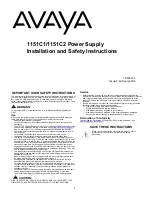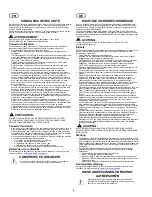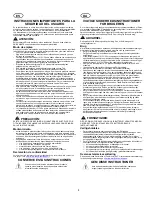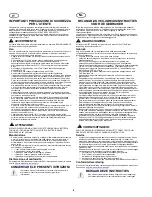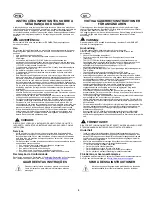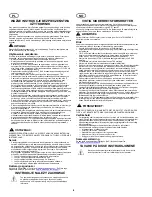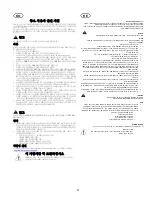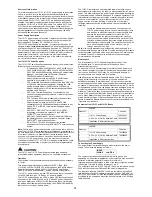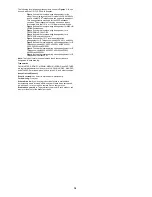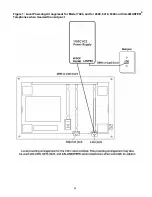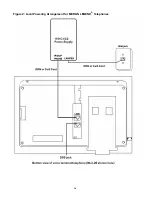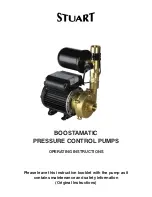
1
1151C1/1151C2 Power Supply
Installation and Safety Instructions
IMPORTANT USER SAFETY INSTRUCTIONS
The most careful attention has been devoted to quality standards in the manufacture of
your new power supply. Safety is a major factor in the design of every Avaya Product.
But, safety is YOUR responsibility too. Please read carefully the helpful tips listed
below. These suggestions will enable you to take full advantage of this product. Then,
retain these tips for later use.
!
WARNING:
This product is NOT for residential use. It is for business systems applications
ONLY.
Use
When using your power supply, the following safety precautions should always be
followed to reduce the risk of fire, electric shock, and injury to persons.
•
Read and understand all instructions.
•
Follow all warnings and instructions marked on the product and contained in its
packaging.
•
The 1151C1/C2 Power Supplies are for use only with specified Avaya equipment as
outlined in the attached materials or available on
http://www.avaya.com/support
.
No other use of the 1151C1/C2 Power supplies is recommended or warranted
•
The equipment must not be connected to TNV-3 (standard analog phone lines) or
TNV-2 circuits.
•
For Australia, the equipment must not be connected to any TNV circuit.
•
The equipment must not be installed in proximity to standard phone lines.
•
This device can be hazardous if immersed in water. Do not use this product near
water, for example, near a bath tub, wash bowl, kitchen sink or laundry tub, in a wet
basement or near a swimming pool. To avoid the possibility of electric shock, do not
use it while you are wet. If you accidentally drop the power supply into water, do not
retrieve it until you have first unplugged the line cord from the modular wall jack,
unplugged the power cord from the AC wall receptacle (or other AC power source),
and unplugged the output cable from any device powered by the supply. Then, call
service personnel to ask about a replacement.
•
This product should be operated only from the type of AC power indicated on the
product label. If you are unsure of the type of AC power being provided, contact a
qualified service person.
•
Do not allow anything to rest on the power cord. Do not locate this product where
the cord will be abused, such as by persons walking on it.
•
Allow adequate ventilation for the product. Do not cover or install in a confined
space that may prevent cooling and allow excessive heat build-up.
•
To reduce the risk of electric shock, do not disassemble this product. There are no
user serviceable parts. Opening or removing covers may expose you to hazardous
voltages. Incorrect reassembly can cause electric shock when the product is
subsequently used.
•
The Avaya model 1151C2 power supply contains a non-spillable sealed lead-acid
battery. Reasonable care should be taken to avoid puncturing, or otherwise
compromising the integrity of the battery housing. Recycle the battery properly.
!
CAUTION:
RISK OF EXPLOTION IF BATTERY IS REPLACED BY AN INCORRECT TYPE.
DISPOSE OF USED BATTERIES ACCORDING TO THE INSTRUCTIONS.
Service
•
Before cleaning or removing from service, unplug the power supply from the
modular wall jack, unplug the power cord from the AC wall receptacle (or other AC
power source), and unplug the output cable from any device powered by the
supply. Do not use liquid cleaners or aerosol cleaners. Use a damp cloth for
cleaning.
•
Be sure to disconnect all cords from this product and refer servicing to qualified
service personnel when these conditions exist:
— If the power supply cord is damaged or frayed.
— If liquid has been spilled into the product.
— If the product has been exposed to rain or water.
— If the product has been dropped or the housing has been damaged.
— If you note a distinct change in the performance of the product.
Declaration of Conformity
To download the Declaration of Conformity (DoC) for this equipment, visit
http://www.avaya.com/support
SAVE THESE INSTRUCTIONS
When you see this warning symbol on the product, refer to
this instructions booklet for more information before
proceeding.
!
16-600743
Issue 2, February 2006

